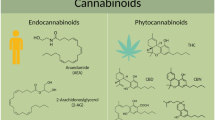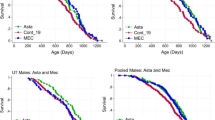Abstract
Slowing down aging-associated accumulation of molecular damage or its prevention represents a promising therapeutic paradigm to combat aging-related disease and death. While several chemical compounds extend lifespan in model organisms, their mechanism of action is often unknown, reducing their therapeutic potential. Using a systematic approach, here we characterize the impact of the GMP pathway on yeast lifespan and elucidate GMP synthesis inhibition as a lifespan extension mechanism. We further discover that proteasome activation extends lifespan in part through the GMP pathway. GMP synthesis inhibition exerts its lifespan extension effect independently of the canonical nutrient-sensing pathway regulating lifespan. Exposing longitudinally aging yeast cells to GMP pathway inhibition in an age-dependent manner, we demonstrate that the lifespan extension is facilitated by slowing, rather than reversing, the aging process in cells. Using a GUK1 mutant with lower GMP-to-GDP conversion activity, we observe lifespan extension, suggesting that reduced GDP level by itself can also extend yeast lifespan. These findings elucidate the involvement of nucleotide metabolism in the aging process. The existence of clinically-approved GMP pathway inhibitors elicits the potential of a new class of therapeutics for aging-related disorders.





Similar content being viewed by others
References
A Double-Blind, Placebo-controlled trial of anti-aging, pro-autophagy effects of metformin in adults with prediabetes—full text view—ClinicalTrials.gov. https://clinicaltrials.gov/ct2/show/NCT03309007. Accessed 5 Jan 2018
Brandhorst S et al (2015) A periodic diet that mimics fasting promotes multi-system regeneration, enhanced cognitive performance, and healthspan. Cell Metab 22:86–99
Catapano CV, Dayton JS, Mitchell BS, Fernandes DJ (1995) GTP depletion induced by IMP dehydrogenase inhibitors blocks RNA-primed DNA synthesis. Mol Pharmacol 47:948–955
Chatterjee M, Acar M (2018) Heritable stress response dynamics revealed by single-cell genealogy. Sci Adv 4:e1701775
de Lathouder S, Gerards AH, Dijkmans BAC, Aarden LA (2004) Two inhibitors of DNA-synthesis lead to inhibition of cytokine production via a different mechanism. Nucleosides Nucleotides Nucleic Acids 23(8–9):1089–1100
Dong X, Milholland B, Vijg J (2016) Evidence for a limit to human lifespan. Nature 538:257–259
Dose Finding Study to Determine if BEZ235 alone or in combination with RAD001 decreases the incidence of respiratory tract infections in the elderly—full text view—ClinicalTrials.gov. https://clinicaltrials.gov/ct2/show/NCT03373903. Accessed 5 Jan 2018
DrugAge: Database of ageing-related drugs. https://genomics.senescence.info/drugs/index.php. Accessed 5 Jan 2018
Dujardin G, Kermorgant M, Slonimski PP, Boucherie H (1994) Cloning and sequencing of the GMP synthetase-encoding gene of Saccharomyces cerevisiae. Gene 139:127–132
Escobar-Henriques M, Daignan-Fornier B (2001) Transcriptional regulation of the yeast GMP synthesis pathway by its end products. J Biol Chem 276:1523–1530
Fontana L, Partridge L, Longo VD (2010) Dietary restriction, growth factors and aging: from yeast to humans. Science 328:321–326
Gasch AP, Spellman PT, Kao CM, Carmel-Harel O, Eisen MB, Storz G, Botstein D, Brown PO (2000) Genomic expression programs in the response of yeast cells to environmental changes. Mol Biol Cell 11:4241–4257
Gutin J, Sadeh A, Rahat E, Aharoni A, Friedman N (2015) Condition-specific genetic interaction maps reveal crosstalk between the cAMP/PKA and the HOG MAPK pathways in the activation of the general stress response. Mol Syst Biol 11:829
Harari Y, Kupiec M (2018) Mec1ATR is needed for extensive telomere elongation in response to ethanol in yeast. Curr Genet 64:223
Harman D (1991) The aging process: major risk factor for disease and death. Proc Natl Acad Sci USA 88:5360–5363
Heischmann S, Dzieciatkowska M, Hansen K, Leibfritz D, Christians U (2017) The immunosuppressant mycophenolic acid alters nucleotide and lipid metabolism in an intestinal cell model. Sci Rep 7:45088
Kaeberlein M et al (2005) Cell biology: regulation of yeast replicative life span by TOR and Sch9 response to nutrients. Science 310:1193–1196
Kruegel U et al (2011) Elevated proteasome capacity extends replicative lifespan in saccharomyces cerevisiae. PLoS Genet 7:e1002253
Lecoq K, Konrad M, Daignan-Fornier B (2000) Yeast GMP kinase mutants constitutively express AMP biosynthesis genes by phenocopying a hypoxanthine-guanine phosphoribosyltransferase defect. Genetics 156:953–961
Lin SJ, Defossez PA, Guarente L (2000) Requirement of NAD and SIR2 for life-span extension by calorie restriction in Saccharomyces cerevisiae. Science 289:2126–2128
Liu P, Acar M (2018) The generational scalability of single-cell replicative aging. Sci Adv 4:eaao4666
Liu P, Young TZ, Acar M (2015) Yeast replicator: a high-throughput multiplexed microfluidics platform for automated measurements of single-cell aging. Cell Reports 13:634–644
Liu P, Song R, Elison GL, Peng W, Acar M (2017) Noise reduction as an emergent property of single-cell aging. Nat Commun 8:680
Longo VD, Shadel GS, Kaeberlein M, Kennedy B (2012) Replicative and chronological aging in saccharomyces cerevisiae. Cell Metab 16:18–31
Mannick JB et al (2014) mTOR inhibition improves immune function in the elderly. Sci Transl Med 6:268ra179
Matai L, Sarkar GC, Chamoli M, Malik Y, Kumar SS, Rautela U, Jana NR, Chakraborty K, Mukhopadhyay A (2019) Dietary restriction improves proteostasis and increases life span through endoplasmic reticulum hormesis. Proc Natl Acad Sci USA 116:17383–17392
McPhillips CC, Hyle JW, Reines D (2004) Detection of the mycophenolate-inhibited form of IMP dehydrogenase in vivo. Proc Natl Acad Sci USA 101:12171–12176
Medvedik O, Lamming DW, Kim KD, Sinclair DA (2007) MSN2 and MSN4 link calorie restriction and TOR to sirtuin-mediated lifespan extension in Saccharomyces cerevisiae. PLoS Biol 5:2330–2341
Petrascheck M, Ye X, Buck LB (2007) An antidepressant that extends lifespan in adult Caenorhabditis elegans. Nature 450:553–556
Sarnoski EA, Liu P, Acar M (2017) A high-throughput screen for yeast replicative lifespan identifies lifespan-extending compounds. Cell Rep 21:2639–2646
Sarnoski EA, Song R, Ertekin E, Kooence N, Acar M (2018) Fundamental characteristics of single-cell aging in diploid yeast. iScience. https://doi.org/10.1016/j.isci.2018.08.011
Senohrabkova L, Malcova I, Hasek J (2019) An aggregation-prone mutant of eIF3a forms reversible assemblies escaping spatial control in exponentially growing yeast cells. Curr Genet 65:919
Shen ZJ, Postnikoff S, Tyler JK (2019) Is Gcn4-induced autophagy the ultimate downstream mechanism by which hormesis extends yeast replicative lifespan? Curr Genet 65:717
Singh P, Li R (2018) Emerging roles for sphingolipids in cellular aging. Curr Genet 64:761
Song R, Acar M (2019) Stochastic modeling of aging cells reveals how damage accumulation, repair, and cell-division asymmetry affect clonal senescence and population fitness. BMC Bioinform 20:391
Song R, Sarnoski EA, Acar M (2018) The systems biology of single-cell aging. iScience. https://doi.org/10.1016/j.isci.2018.08.023
Steinkraus KA, Kaeberlein M, Kennedy BK (2008) Replicative aging in yeast: the means to the end. Annu Rev Cell Dev Biol 24:29–54
Sweeney MJ, Hoffman DH, Esterman MA (1972) Metabolism and biochemistry of mycophenolic acid. Cancer Res 32:1803–1809
Tremblay-Létourneau M, Despins S, Bougie I, Bisaillon M (2011) Virtual high-throughput screening identifies mycophenolic acid as a novel RNA capping inhibitor. PLoS One 6:e24806
Walther T, Novo M, Rössger K, Létisse F, Loret M-O, Portais J-C, François J-M (2010) Control of ATP homeostasis during the respiro-fermentative transition in yeast. Mol Syst Biol 6:344
Wang L, Mao X, Ju D, Xie Y (2004) Rpn4 is a physiological substrate of the Ubr2 ubiquitin ligase. J Biol Chem 279:55218–55223
Xue Y, Acar M (2018) Mechanisms for the epigenetic inheritance of stress response in single cells. Curr Genet. https://doi.org/10.1007/s00294-018-0849-1
Young TZ, Liu P, Urbonaite G, Acar M (2019) Quantitative insights into age-associated DNA-repair inefficiency in single cells. Cell Rep 28:2220–2230
Acknowledgements
We thank Dr. Bertrand Daignan-Fornier for sending us the yeast strain carrying the guk1-1 allele of the GUK1 gene. We also thank Dr. Shirin Bahmanyar, Dr. Marc Hammarlund, Dr. Gerald Shadel, Dr. Patrick Sung, Guste Urbonaite, Dr. Ruijie Song, Dr. David Moreno Fortuno, and Acar Lab members for comments and feedback on different stages of this work. EAS acknowledges support through an NSF Graduate Research Fellowship and Gruber Science Fellowship. MA acknowledges funding from the Ellison Medical Foundation (AG-NS-1015-13) and US National Institutes of Health (1DP2AG050461-01 and 1R01GM127870-01).
Author information
Authors and Affiliations
Contributions
PL, EAS, and MA contributed to project planning, and design and preparation of the manuscript. EAS and PL contributed to strain construction, data collection, data analysis, and preparation of the figures. TTO contributed to strain construction, data collection, and data analysis. TZY contributed to data collection. PL, EAS, TTO, TZY, and MA interpreted the data and results, and read and approved the manuscript.
Corresponding author
Ethics declarations
Conflict of interests
The authors declare competing financial interests: EAS and MA have filed a PCT International patent application.
Additional information
Communicated by M. Kupiec.
Publisher's Note
Springer Nature remains neutral with regard to jurisdictional claims in published maps and institutional affiliations.
Electronic supplementary material
Below is the link to the electronic supplementary material.
Rights and permissions
About this article
Cite this article
Liu, P., Sarnoski, E.A., Olmez, T.T. et al. Characterization of the impact of GMP/GDP synthesis inhibition on replicative lifespan extension in yeast. Curr Genet 66, 813–822 (2020). https://doi.org/10.1007/s00294-020-01068-w
Received:
Revised:
Accepted:
Published:
Issue Date:
DOI: https://doi.org/10.1007/s00294-020-01068-w




